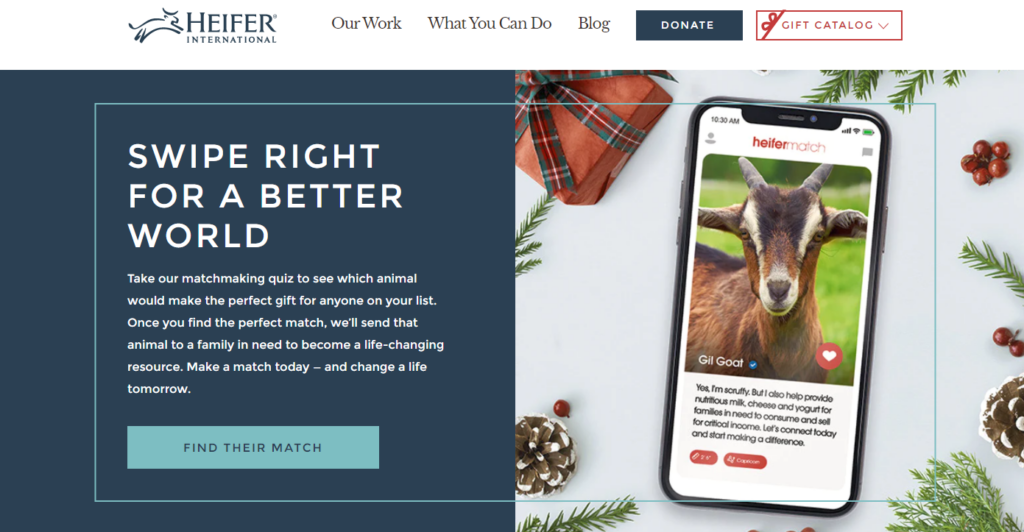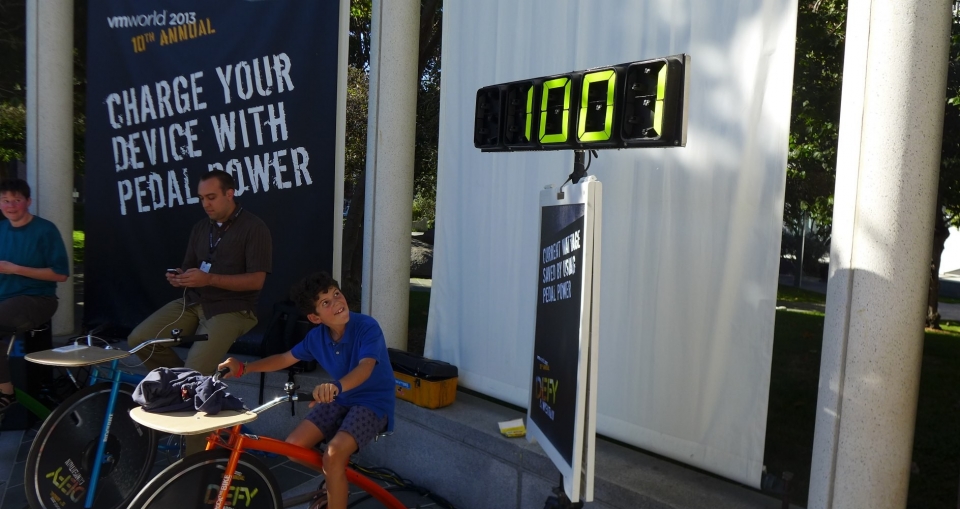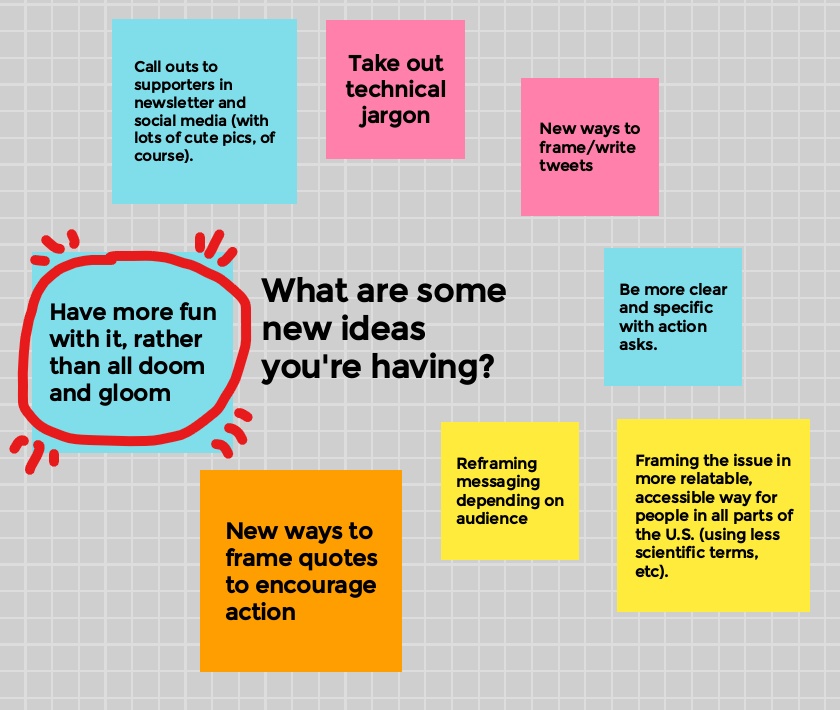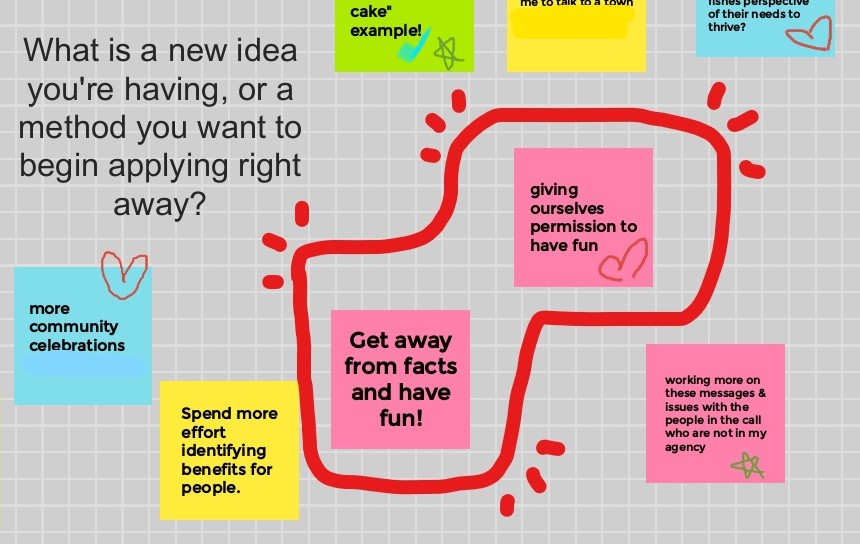
Give yourself permission to have fun
We take our work seriously.
And we work on serious issues.
But that doesn’t mean messages about our work have to be so serious.
In fact, we’ll likely get more people engaged on these issues and in our activities if it feels like something fun to do.
After all, who doesn’t like fun?!?!?
Making the action fun to do makes it more enticing for the audience.
It jolts them out of their status quo bias, piques their interest, and gets them excited about joining in.
Which, in turn, makes the audience more receptive to engaging further, even on the more serious sides of the issue.
This motivator doesn’t work for all projects, but it’s worth exploring if there’s an opportunity to infuse more fun into what we’re asking people to do.
Here are two options to explore:
- Turning the mundane into the amazing.
- Appealing to other interests of the audience.
Turn the mundane into the amazing
Let’s take a look at how Heifer International does this.
They need people to donate money to their cause. They could do it the mundane way by:
- Leaning into messages of purpose, duty, and responsibility.
- Appealing to our empathetic side by highlighting how much families are in-need and how our support makes a difference.
- Explaining what a $200 donation would provide (and probably comparing it to the cost of a cup of coffee per day)
Essentially, they could do this just like every single commercial on TV asks for charitable donations.
OR, they could make it fun and uh-mah-zing by:
- Asking people to give the gift of a goat, instead of a dollar amount.
- Creating a matchmaking quiz to see which livestock gift is the best fit for you.
- Including a dating-app-style caption for Gil Goat that starts with “Yes, I’m scruffy. But I also help provide nutritious milk, cheese, and yogurt…” [Leading with the fun, following-up with the impact.]
I don’t know about you, but I’m much more likely to “swipe right” on giving the gift of a goat than donating just “a dollar a day”.
Not only does this approach make donating more fun to do, it also increases the likelihood that your audience will tell other people about the cool experience they had.
Appeal to other interests of the audience
If your audience isn’t naturally jazzed about the prospect of discussing serious conservation or sustainability issues, then try to connect with them on a topic they do find interesting.
This is a great approach if you’re hosting events and activities.
You will attract new audience segments by connecting on a shared interest, which opens the door for introducing them to other topics.
For example, you could have “pedal powered” music or movies that engage the audience on their existing interests of film, music, cycling, outdoor activities, and exercise.
While they’re having fun fueling the energy for the event, you can introduce topics of sustainable and renewable energy sources, earth-friendly transportation options, and more.
Having fun and feeling enjoyment helps the audience be more receptive and open to learning about new and different things.
Permission to have fun
Making the action fun to do is one of the key motivators I teach in workshops and courses.
I love seeing how this concept creates an “aha!” moment for participants that unlocks creative and fresh ways of engaging audiences.
On the spot, they’ll come up with new ideas on hosting social events, celebrating weird-looking species, creating friendly competitions, cheering for early adopters, and using fun slogans.
And they even have fun coming up with these fun ideas!
What it took to get to those creative ideas was simply giving themselves permission to move away from facts and doom & gloom, and have some fun.
As you can witness in the post-workshop reflection notes shared below (which obviously influenced this post).
Fun won’t be an appropriate angle for all causes or efforts. I get that.
Yet it’s worth exploring if there is a place for it somewhere in your behavior change projects before ruling it out.
And in case you need it – you have it: PERMISSION TO HAVE FUN.
Go for it!
Psst…My short course has a lesson on motivators to use in your messages, which includes fun to do! Check it out here.






